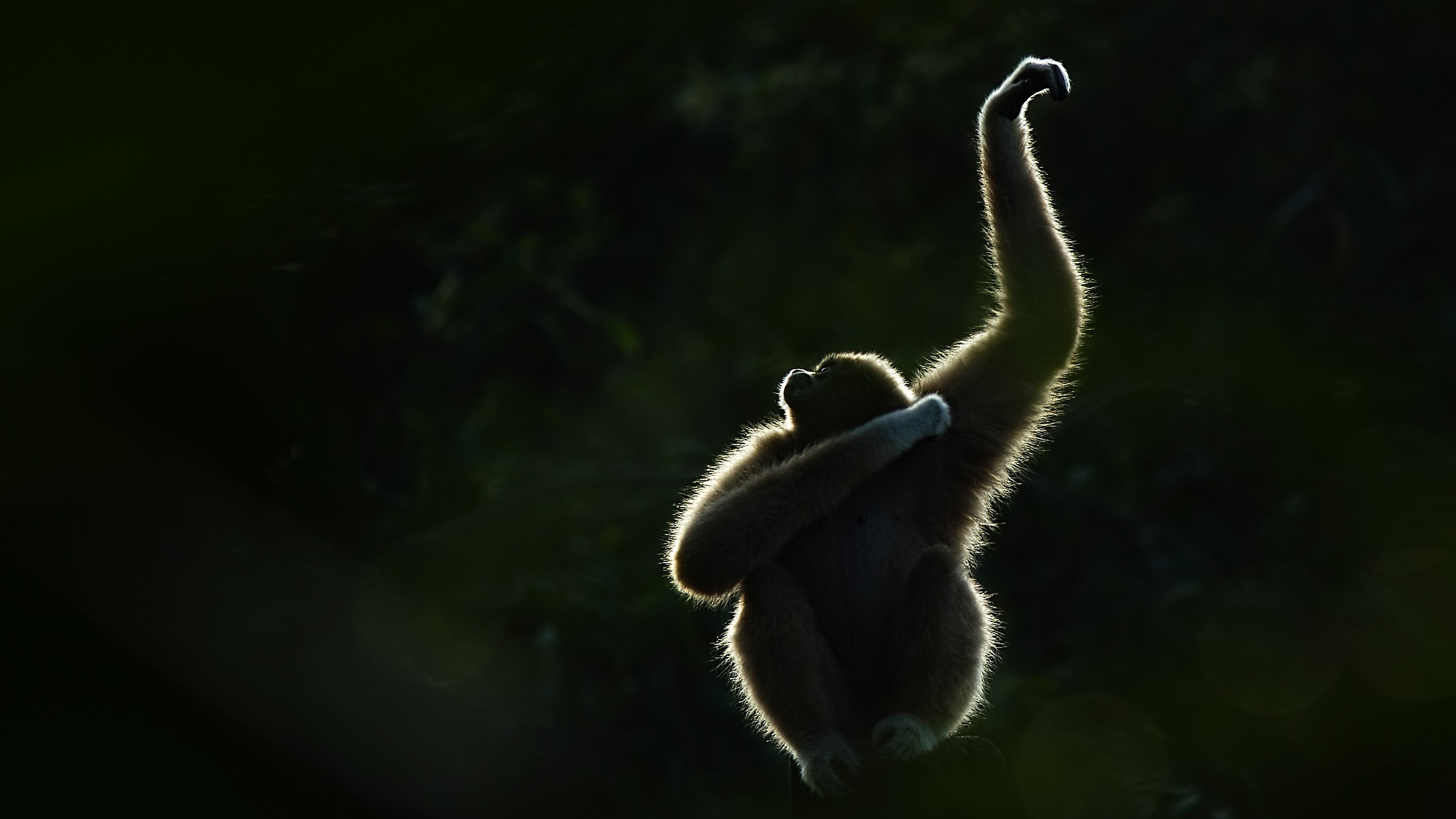
Female gibbons perform rhythmic robotic dances for attention or because they're frustrated, researchers say — even glancing over their shoulder while they move to make sure someone is watching.
The scientists observed four species of gibbons in captivity and surveyed studies of gibbons both in captivity and in the wild to analyze dance-like behaviors. They found that the apes performed in a variety of contexts. They published their findings Aug. 29 on the preprint server BioRxiv.
Dance-like behaviors exist throughout the animal kingdom: in birds, bees and many more. But "for non-human primates, the evidence of dance is still scarce, which is what makes the gibbons findings so exciting," study co-author Pritty Patel-Grosz, a linguistics professor at the University of Oslo, told Live Science in an email. "It is also rare that in gibbons, it's the females that dance, and not the males. This is not what we typically find in the animal kingdom."
Great apes — our closest non-human relatives, who include bonobos, chimpanzees, gorillas and orangutans — have not shown any convincing evidence of dance-like behaviors, according to the research team. But crested gibbons, which are lesser apes, have shown evidence of something that looks like dance in previous research.
Related: Strange love: 13 animals with truly weird courtship rituals
"Gibbons dancing was often described as a 'robot dance', but to us it rather looks like some kind of vogueing," Patel-Grosz said.

The researchers examined three aspects of the behavior to define it as dance: whether the movements are intentional, rhythmic and performed in a way that shows non-random structure. The gibbons in the study showed intentional movements, checking for an audience by looking over their shoulder while dancing. The dance was rhythmic, as the length of time between movements in a sequence was uniform — like the gibbons were following a beat. And the structure of the dance was non-random, with movements grouped together.
"When we observe a human dance performance, we will often see that some dance movements are similar to each other in a way that makes us think that they 'belong' together," Patel-Grosz said. "If I'm dancing six steps in one direction, and then six steps in another direction, then we can establish that these are two groups, each consisting of six steps."
The researchers are unsure exactly why the gibbons dance. These lesser apes danced both in the wild and in captivity, and in both cases only sexually mature female gibbons engaged in the behavior. Dancing in the wild was primarily connected to copulation with males, while in captivity it was connected to other contexts as well, such as social interactions, to solicit grooming or, when directed at humans, in anticipation of feeding or social interaction. "The dances occasionally appear to be driven by frustration in connection with excitement," Patel-Grosz said.
The structured, rhythmic and intentional nature of the gibbons' dance means it shares characteristics with human dance. However, the researchers noted that because our last common ancestor with gibbons lived over 20 million years ago — and because our closer great ape relatives fail to exhibit similar dance behavior — it's unclear whether the way humans dance is connected to the way gibbons dance.
The research team is interested in understanding why dance might evolve in a particular primate species not in another — for example, in our great ape relatives.







